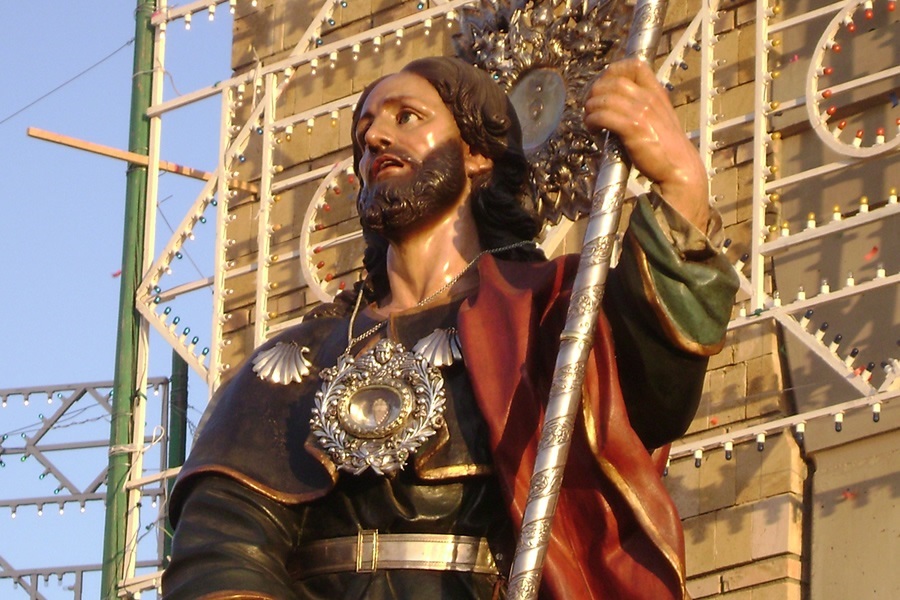
Happy Feast of St. Rocco
08-13-2023Pastoral ReflectionsO Great St. Rocco, deliver us, we beseech you, from contagious diseases, and the contagion of sin. Obtain, for us, a purity of heart which will assist us to make good use of health, and to bear sufferings with patience. Teach us to follow your example in the practice of penance and charity, so that we may, one day enjoy the happiness of being with Christ, Our Savior, in Heaven. Amen.
Who is Saint Rocco?
St. Rocco was born of noble parentage about 1340 A.D. in Montpellier, France. At birth it was noted that he had a red cross-shaped birthmark on the left side of his chest. As a young child, St. Rocco showed great devotion to God and the Blessed mother. At an early age, his parents died leaving him an orphan under the care of his uncle, the Duke of Montpellier. Soon after, St. Rocco distributed his wealth among the poor and took a vow of poverty.
St. Rocco dressed in the clothes of a pilgrim and departed for Rome. Along the way, he stopped at Aquapendente, which was stricken by the plague, and devoted himself to the plague victims, curing them with prayer and the sign of the cross. He next visited Cesena and other neighboring cities, and eventually, Rome. Legend has it that everywhere he visited, the terrible scourge disappeared before St. Rocco’s miraculous power. He visited Mantua, Modena, Parma, and other cities, all with the same results.
During his travels, he too contracted the plague which was evident by an open sore on his leg. Rocco was banished from the city and took refuge in a cave. There he slept on leaves and drank water from a small stream. Miraculously a dog that refused to eat, faithfully brought him bread as a means of sustenance. The dog used to live near a castle, and the lord of this castle having a curious nature followed this dog into the woods and discovered Rocco. The nobleman had pity on Rocco and brought him to his castle where he was cured.
St. Rocco traveled through northern Italy for two or three more years before returning to his birthplace in France. He was so weak and sick from suffering, the townspeople did not recognize him and threw him into jail as a spy. After five years, a guard entered his cell and found St. Rocco near death. The dungeon was illuminated with a blue light radiating from his body. Upon hearing this, the Governor, the Duke of Montpellier, demanded to know St. Rocco's identity. St. Rocco faintly replied, I am your nephew Rocco. Only one thing could prove that, so he had him disrobed and the red cross-like mark was visible on the left side of his chest. The Governor and the townspeople present in the cell then believed, and a voice from paradise was heard announcing that St. Rocco's soul had merited immortal glory in Heaven.
Even after his death, St. Rocco performed many miracles. Saint Rocco is venerated in the Roman Catholic Church as the protector against the plague and all contagious diseases. The statue of Saint Rocco is considered unique among theologians because of his pose. It is most unusual because it depicts him with his hand pointing to an open sore on his leg. Few images of saints expose any afflictions or handicaps. His body is enclosed in a glass tomb in the church of St. Rocco in Venice, Italy. St. Rocco is remembered on August 16th of each year.
BACK TO LIST